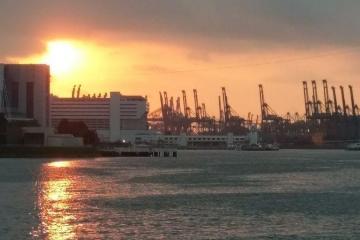U.S. Gas Prices Surge as Europe Shuns Russian Supply
Advertisements
The recent surge in natural gas prices in the United States, spurred by an impending polar vortex, is sending shockwaves across Europe, which is still grappling with its newfound independence from Russian energy suppliesThe implications of these changes are profound and multifaceted, affecting not only energy pricing but also geopolitical dynamics and economic stability.
As reports surfaced on January 3, 2023, the United States is bracing for potentially one of the coldest January months in over a decadeThis chilling forecast has led to a dramatic spike in natural gas prices, with a notable 4% increase in just a week and a staggering 14% rise over the course of a monthParticularly concerning is the benchmark Henry Hub natural gas futures contract, which surged to as high as $4.20 per million British thermal unitsSuch price hikes are reminiscent of past winter storms, which have fundamentally disrupted gas supplies, leading to significant drops in production.
Reflecting on the recent history of winter storms, analysts remember the devastating impacts of the winter storms "Uri" in 2021 and "Elliott" in 2022, both of which resulted in a decline in average monthly natural gas production by 3 to 7 billion cubic feet
The National Weather Service has issued warnings that a polar vortex is expected to sweep through the eastern and central United States, introducing what they have termed "the coldest air and dangerous wind chill of the season." As Phil Flynn, a senior analyst at Price Futures Group, indicated, the market's previous complacency—backed by a surge in domestic production and stock levels—may soon be tested by archly cold winter conditionsHe noted, "If the weather forecasts are accurate, supply disruptions could drive prices up by a dollar or more." This rise could have serious repercussions for households across the nation, as nearly half of U.S. households rely on natural gas for heating, and significant upward adjustments in prices for gas and electricity are anticipated.
Meanwhile, across the Atlantic, Europe is also feeling the heat but in a rather starkly different context
- Has the Bank Recovered From Its 60% Plunge?
- Is Oil's Reign Over as Energy Shifts?
- Markets Rethink Rate Cut Outlook
- Dollar Soars 9%, Index Hits Two-Year High
- US Debt Risks Global Economy
The turning point came on New Year’s Day when Russia officially ceased its gas transit through Ukraine, a move that seems to signify the end of Moscow's dominance in the European energy sectorGazprom, Russia's state-owned gas company, declared that supplies had been terminated following Ukraine's refusal to re-sign transit agreementsThis cessation affects about 5% of the total natural gas imports into the European Union, putting Ukraine in a position where it stands to lose approximately $1 billion in transit fees, while Gazprom could see a significant drop in sales, estimated at nearly $50 billion.
Although the cessation of Russian gas supplies could have been predicted to result in price surges within the European markets, alternatives identified through strategic supply sourcing have cushioned the blow, keeping prices relatively stableEuropean natural gas futures did experience a spike, climbing to 51 euros per megawatt-hour— the highest point since October 2023—before settling around 50 euros
However, the landscape remains fragile, especially with depletion rates of energy stockpiles at the fastest pace since 2021, and forecasts suggest that sub-freezing temperatures may catapult heating demands, further escalating prices in the foreseeable future.
Intriguingly, amidst this backdrop of volatility, analysts are observing a dramatically altering energy arena where the United States is poised to emerge as a significant benefactor of the ongoing crisisWith Norway and the United States stepping in to fill the void left by Russia, the U.S. has already overtaken Russia as Europe’s largest gas supplier, delivering 56.2 billion cubic meters in 2023, which accounts for nearly 19.4% of Europe’s total gas importsAdditionally intriguing is the fact that the U.S. has been crowned the largest liquefied natural gas (LNG) supplier to Europe for three consecutive yearsSince the onset of conflict, U.S. exports of LNG to the continent have surged from a daily average 2.4 billion cubic feet in 2021, representing 27% of European LNG imports, to approximately 7.1 billion cubic feet in 2023, making up nearly half of European imports.
The decreasing influx of Russian gas into Europe has meant that American LNG exports are slated to observe a further impressive surge
Analysts at Morgan Stanley have projected that the burgeoning LNG export volumes coupled with rising electricity demand will push the U.S. natural gas market into a new cycle of demand growthHowever, for Europe, the transition from being heavily reliant on Russian gas to instead leaning on the more costly American LNG is tellingThe polar vortex news hitting Europe may indeed exacerbate already challenging conditions.
Bloomberg’s energy analyst Stephen Stapczynski adeptly encapsulated the severity of the situation: "Cheap Russian gas has been a linchpin for some European economies for half a centuryThis era is now overEurope faces higher and more enduring gas prices." Such stark remarks underscore a sentiment that is sweeping through European capitals—a reality check on energy dependency and the need for transformative energy policies to accommodate this new paradigm.
Looking forward, the uncertainties surrounding energy supplies and pricing may necessitate a reevaluation of both domestic and international energy strategies

Leave a Comment